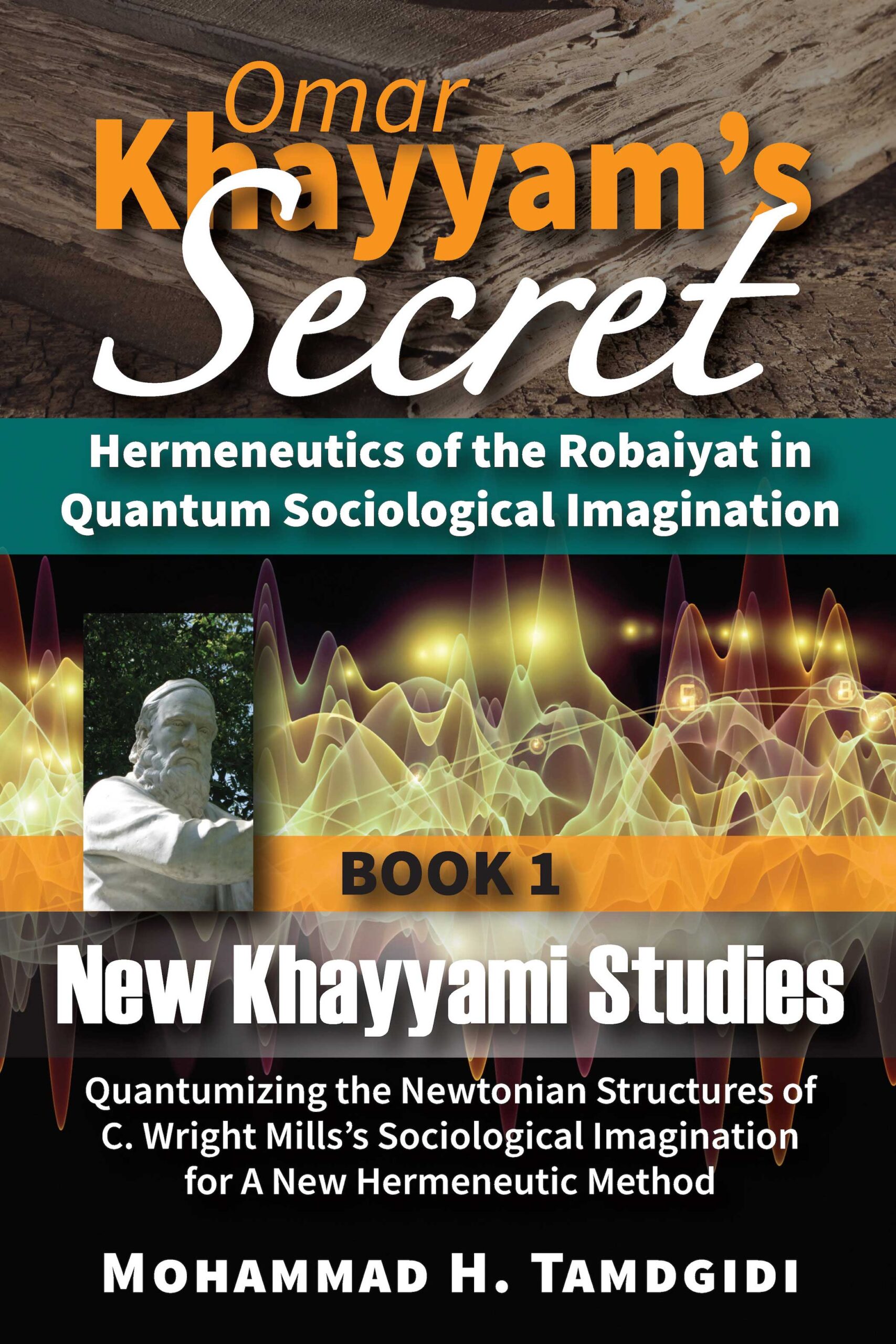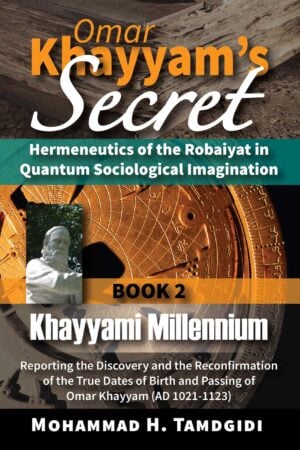Book Section: CHAPTER III — Quantum Sociological Imagination as a Framework for New Khayyami Studies — by Mohammad H. Tamdgidi
$20.00
This essay, titled “Quantum Sociological Imagination as A Framework for Khayyami Studies,” is the third chapter of the first book, subtitled New Khayyami Studies: Quantumizing the Newtonian Structures of C. Wright Mills’s Sociological Imagination for A New Hermeneutic Method, of the twelve-book series, Omar Khayyam’s Secret: Hermeneutics of the Robaiyat in Quantum Sociological Imagination, authored by Mohammad H. Tamdgidi.
Description
Abstract
This essay, titled “Quantum Sociological Imagination as A Framework for Khayyami Studies,” is the third chapter of the first book, subtitled New Khayyami Studies: Quantumizing the Newtonian Structures of C. Wright Mills’s Sociological Imagination for A New Hermeneutic Method, of the twelve-book series, Omar Khayyam’s Secret: Hermeneutics of the Robaiyat in Quantum Sociological Imagination, authored by Mohammad H. Tamdgidi.
In the chapter, the author offers a historical overview of how classical Newtonianism as a product of an historical compromise between a receding religiosity and an emerging secularism in the West met its limits and fell into crisis when confronted with the new findings of quantum science. Using the same eight-fold model he used to describe the attributes of the Newtonian way of thinking, Tamdgidi suggests that the quantum way of imagining reality can also be characterized as having eight sets of attributes: 1- Simultaneity (not “duality,” nor “complementarity”); 2-Superpositionality; 3-Inseparability; 4-Relativity (subject-included objectivity); 5-Probability; 6-Transcontinuity (which is a term he prefers to call what is commonly referred to as “discontinuity”); 7-Transdisciplinarity
In Tamdgidi’s view, we have to always distinguish between three kinds of Newtonianism: classical, incompletely relativistic, and completely relativistic. The classical Newtonianism universalizes the eight attributes as listed earlier. The incompletely relativistic Newtonianism is the kind prevalent today, confused, enigmatized, still not freed from the classical bounds but not yet fully embracing attributes that it could have independently discovered for itself, ones that it would have found to be “completely” resonating with the quantum science findings (itself stripped of elements contributive to the quantum enigma, such as the “wave-particle duality,” “Complementarity Principle,” and so on). For the completely relativistic Newtonianism he has coined (2020) the term Quantum Newtonianism. It is a Newtonianism that treats the reality from the standpoint of any observer’s reference frame to be a local reference frame or fold of the broader quantum reality as a whole.
The author suggests that quantumizing the Newtonian in favor of a quantum sociological imagination invites the following considerations regarding each of which he offers illustrations, and from each of which he draws inspiration, about how Khayyami studies can be framed. 1. Relating personal troubles and public issues: from dualism to simultaneity (not “duality,” nor “complementarity”); 2. Relating personal troubles (or not) of many selves: from atomism to superpositionality; 3. Relating public issues world-historically: from separability to inseparability; 4. Relating the sociological imaginations of others to those of ourselves: from subjectless objectivity to relativity (subject-included objectivity); 5. Reimagining causal patterns creatively: from determinism to probability; 6. Reimagining causal chains also as causal leaps: from continuity to “transcontinuity” (also known as “discontinuity”); 7. Reimagining sociology: from disciplinarity to transdisciplinarity; and 8. Reimagining science: from Eurocentrism to tansculturalism.
Tamdgidi illustrates in a figure how, by reimagining the elements of the sociological imagination in terms of overlapping and superposing circles, one can arrive at a non-dualistic, both/and, conception of elements that previously could only be imagined in terms of a formal, either/or logic. He argues that using the notion of “Khayyami” as a reference both to the person and to the tradition associated with him can offer a sociologically imaginative quantum device involving a language of simultaneity when referring to Omar Khayyam’s life, works, and legacy—especially when it comes to the study of the attributed Robaiyat—one that can have significant methodological, substantive, and practical consequences for framing and conducting our Khayyami studies.
Recommended Citation
Tamdgidi, Mohammad H. 2021. “CHAPTER III — Quantum Sociological Imagination as a Framework for New Khayyami Studies.” Pp. 109-175 in Omar Khayyam’s Secret: Hermeneutics of the Robaiyat in Quantum Sociological Imagination: Book 1: New Khayyami Studies: Quantumizing the Newtonian Structures of C. Wright Mills’s Sociological Imagination for A New Hermeneutic Method. (Human Architecture: Journal of the Sociology of Self-Knowledge: Vol. XIV, 2021. Tayyebeh Series in East-West Research and Translation.) Belmont, MA: Okcir Press.
Where to Purchase Complete Book: The various editions of the volume of which this Book Section is a part can be ordered from the Okcir Store and all major online bookstores worldwide (such as Amazon, Barnes&Noble, Google Play, and others).
Read the Above Publication Online
To read the above publication online, you need to be logged in as an OKCIR Library member with a valid access. In that case just click on the large PDF icon below to access the publication. Make sure you refresh your browser page after logging in.






